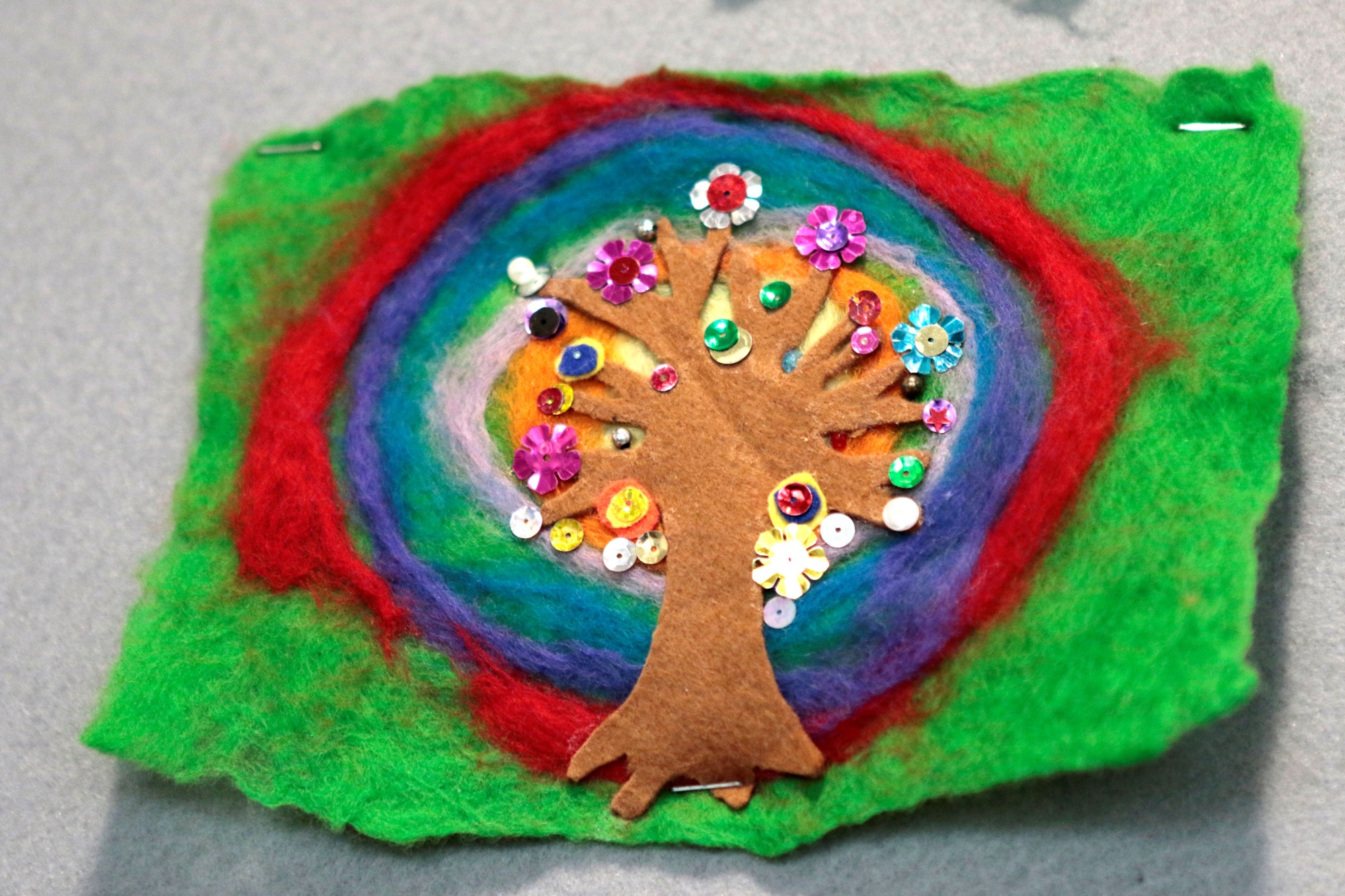Textiles
Subject Leader: Mrs. Beverley Brooke-Mee
Textiles is a highly creative, evidence and skills-based subject which encompasses designs and products for woven, knitted, stitched, printed or decorative textiles that might have a functional or intrinsic purpose. Students are taught a vast array of initial hand and machine stitching techniques, and are then given the opportunity to develop their skills through exploration, to create and communicate their own ideas. They will be introduced to a variety of sources, relevant to textile design, so that they learn how sources inspire the development of ideas. For example, the work and approaches of artists, craftspeople or designers from contemporary and historical contexts, periods, societies and cultures. As they progress, students will develop an ability to critically reflect on their own work and that of others, becoming independent learners and thinkers, enabling them to better articulate their ideas and express themselves creatively.
Textile design is a very broad subject. In school, we introduce the students to a range of different hand stitching textile techniques in Key Stage 3. In Key Stage 4, we further develop these techniques, introducing machine and free-motion stitching and embroidery, whilst encouraging students to research and investigate further techniques for themselves.
Years 7 and 8
Key Stage 3
Students will follow the Textiles curriculum using a selection of the following techniques, processes and media/materials. They will also complete artist research, in addition to evaluating their own designs and the work of others.
A range of textile design techniques and processes, for example:
- Stitching (hand and sewing machine)
- Appliqué
- Weaving
- Layered construction techniques
- Dying
- Printing
- Painting
A range of media and materials suitable for the selected projects, for example:
- Inks/Dyes
- Threads and fabric pieces
- Yarns and fabric strips
- Fibres and varied fabrics
- Fabrics
- Textile Paper and Materials
- Paper, card and fabric
Homework
Homework will be set to encourage independent learning and to embed the knowledge and techniques covered in the lessons. ALL homework should be completed by the due date.
Years 9, 10 and 11
Key Stage 4
Exam Board AQA - Art Textiles
Content
This course of study allows for progression from Key Stage 3 whilst providing a strong foundation for further study at AS and A-level, as well as vocational pathways.
The AQA Art and Design: “Textiles” specification is designed to enable students to develop knowledge and understanding during the course, through a variety of learning experiences and approaches, including engagement with sources. This will allow them to further develop their skills to explore, create and communicate their own ideas in greater depth.
In the Coursework Component 1 each student must select and present a portfolio representative of their course of study. The portfolio must include both a completed sustained project developed in response to a subject, theme, task or brief, evidencing the journey from initial experimentation with ideas to the realisation of intentions, and a selection of other work.
AQA will provide a separate Externally Set Assignment: Component 2 (in January of Year 11), providing a number of different starting points. Students must select and respond to one starting point from their chosen title.
Students will be expected to complete all classwork and homework in order to build their portfolios.
In Component 1 (Portfolio) and Component 2 (Externally Set Assignment) students are required to work in one or more area(s) of textile design, such as those listed below:
- Art textiles
- Fashion design & illustration
- Costume design
- Constructed textiles
- Printed and dyed textiles
- Surface pattern
- Stitched and/or embellished textiles
- Soft furnishings and/or textiles for interiors
- Digital textiles
- Installed textiles
They may explore overlapping areas and combinations of areas.
Assessment
Students must complete BOTH components:

The student’s portfolio (coursework) and the externally set assignment (exam) will measure how pupils have achieved the following assessment objectives.
- AO1: Develop ideas through investigations, demonstrating critical understanding of sources
- AO2: Refine work by exploring ideas, selecting and experimenting with appropriate media, materials, techniques and processes
- AO3: Record ideas, observations and insights relevant to intentions as work progresses
- AO4: Present a personal and meaningful response that realises intentions and demonstrates understanding of visual language
Pupils are continually assessed using the following methods:
- Portfolio evidence in the form of sketchbooks and final outcomes
- End of unit/project assessments
- Mock examination, peer and self-assessment
- Homework tasks
How can Parents and Carers support their children?
- Encourage your child to take an interest in Textiles and Art & Design outside the classroom
- Support your child with research if necessary (library and Internet)
- Ensure your child is completing ALL Coursework and Homework to a high standard
- Encourage your child to visit museums and galleries, if possible
- Take photos of Art/Design/Textiles/Fashion/Clothing/Nature etc., anything relevant and of interest, which can be used to develop their own ideas
- Encourage your child to ask questions in lessons and be ‘pro-active’ learners! They should also ask for support/help in school when required
Additional Resources/Further Reading
- Students can develop their knowledge and understanding by using books and magazines -many are available in libraries or in second hand shops/websites
- AQA Art & Design: Student Handbook (Nelson Thornes ISBN 978-1-4085-0320-1). This book supports the AQA specification but only has a small section on Textiles
- Look in second hand shops for textiles, clothes and trims/embellishments that can be repurposed and/or recycled
- Watch ‘The Great British Sewing Bee’, when it is televised on BBC1
- Visit local museums (Reading Museum and The Museum of English Rural Life, Reading) have some beautiful examples of Textiles, Arts & Crafts. Admission is Free.
- https://www.readingmuseum.org.uk/
- https://merl.reading.ac.uk/
- https://www.pinterest.co.uk/
- www.aqa.org.uk
- www.vam.ac.uk/
- www.bbc.co.uk/gcsebitesize
- www.tate.org.uk/

